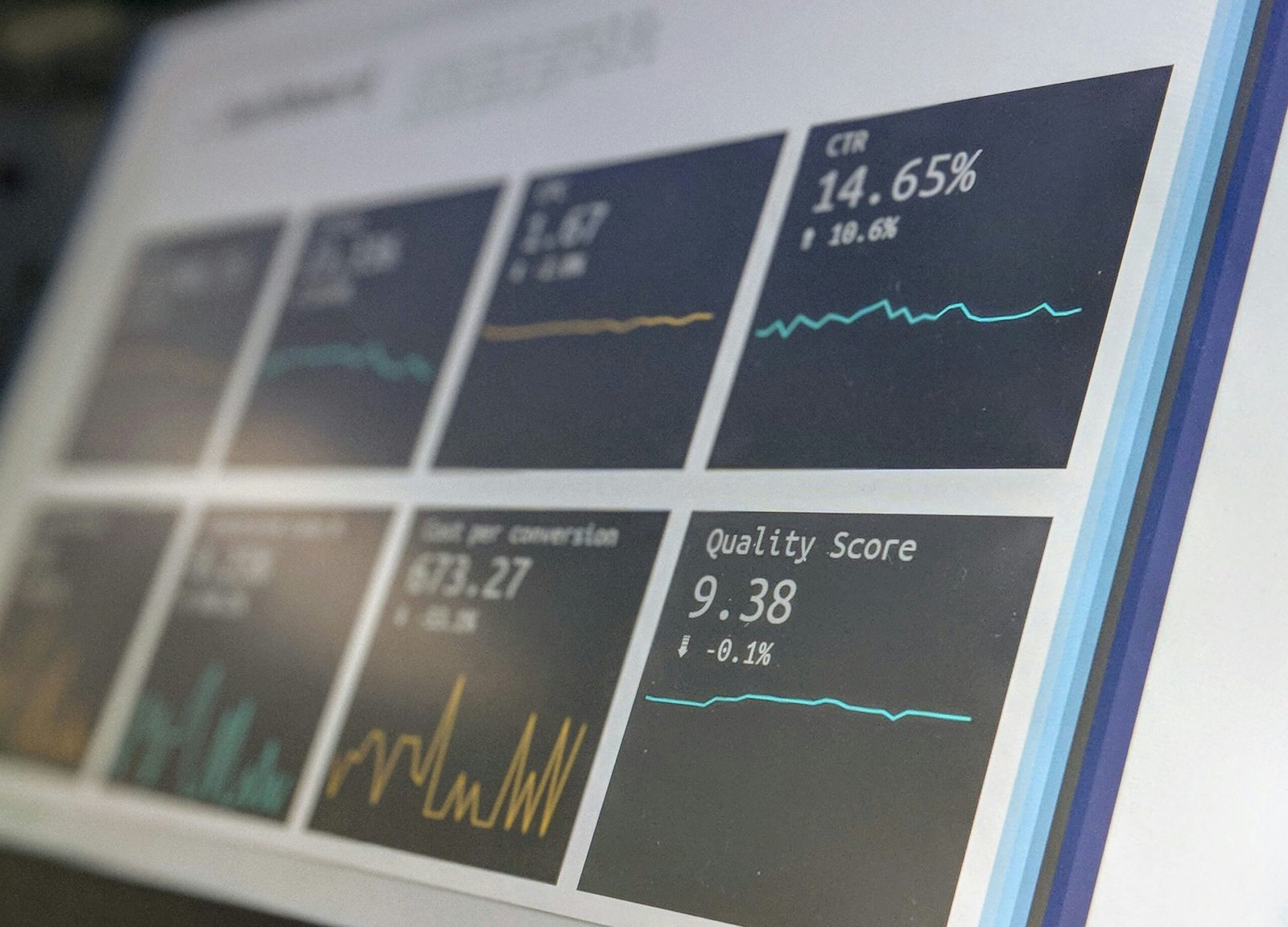2024 Data Trends That Will Redefine How You Connect with Customers
 Photo by Stephen Dawson on Unsplash
Photo by Stephen Dawson on Unsplash Introduction to Data Trends in 2024
The landscape of customer engagement is poised for significant transformation in 2024, driven largely by emerging data trends. Understanding and capitalizing on these data-driven insights will be paramount for businesses aiming to refine their strategies and maintain a competitive edge. As the importance of data continues to escalate, companies across various industries will find themselves necessitated to adapt to the evolving patterns in data utilization and interpretation.
In today’s fast-paced digital world, data serves as the lifeblood of strategic decision-making. The upcoming year promises a notable shift in how organizations harness data to connect with their clientele. From personalized marketing campaigns to predictive analytics, these trends will not only enhance customer experiences but also streamline operational efficiencies. This dynamic interplay of data and technology will cater to the growing demand for real-time interaction and tailored customer journeys.
Moreover, the ripple effect of these upcoming trends will be felt across a wide array of sectors. Healthcare, finance, retail, and beyond will see revolutionary changes as data strategies become more sophisticated and integral to their core operations. Businesses will increasingly rely on advanced data analytics to distill actionable insights, optimize resource allocation, and bolster client relationships. Therefore, staying abreast of these trends is no longer optional but a crucial aspect of sustained growth and relevance.
This blog post aims to delve into the specific data trends that are forecasted to redefine customer engagement in 2024. Each section will explore a particular trend, elucidating its significance and anticipated impact on various industries. By examining these key developments, businesses can better prepare for the impending changes and strategically position themselves to leverage the full potential of data in the forthcoming year.
Personalization Through Advanced Data Analytics
In the rapidly evolving landscape of customer engagement, personalization has transitioned from a novelty to a necessity. Utilizing advanced data analytics, businesses are now capable of crafting highly tailored experiences that resonate profoundly with individual customers. At the heart of this transformative trend lie technologies such as machine learning and artificial intelligence (AI).
Machine learning, a subset of AI, empowers businesses to analyze vast amounts of customer data, uncovering patterns and preferences that were previously impossible to discern. By leveraging algorithms that continuously learn and adapt, companies can anticipate customer needs and deliver bespoke solutions in real-time. For instance, e-commerce platforms use advanced data analytics to recommend products based on browsing history, purchase behavior, and even social media interactions. This degree of personalization not only enhances the shopping experience but also significantly drives customer loyalty and sales.
AI-driven chatbots are another excellent example of how personalization through advanced data analytics is being implemented. These smart assistants provide immediate, personalized responses by analyzing past interactions and customer data. They can handle inquiries ranging from product specifications to post-purchase support, ensuring seamless and satisfying customer experiences. This use of AI in customer service exemplifies how data analytics can create frictionless engagement, retaining customer interest and fostering loyalty.
The incorporation of predictive analytics, powered by advanced data analytics, has also revolutionized marketing strategies. Companies now use predictive models to forecast customer behavior, segment audiences more accurately, and personalize marketing campaigns. For instance, streaming services like Netflix analyze viewing habits to suggest content tailored to individual preferences. This not only improves user satisfaction but also strengthens customer retention by continuously offering value.
As we venture further into 2024, the integration of advanced data analytics for personalization is set to become even more sophisticated. Businesses that adeptly harness these technologies will differentiate themselves in the competitive marketplace, delivering unparalleled customer experiences that drive sustainable growth.
The Rise of Predictive Analytics
Predictive analytics represents a transformative methodology, leveraging historical data, statistical algorithms, and machine learning techniques to forecast future outcomes based on past behavior. By analyzing vast quantities of data, businesses can anticipate customer behavior and preferences with remarkable accuracy. This forward-looking approach is increasingly crucial for companies aiming to stay competitive in a rapidly evolving market.
The tools and models used in predictive analytics are diverse and sophisticated. Common methods include regression analysis, neural networks, decision trees, and Bayesian statistics. These models process data to identify patterns and correlations, which are then applied to predict future trends. For instance, regression analysis can determine how various independent variables influence a dependent variable, such as customer purchase likelihood. Machine learning models, such as neural networks, excel in recognizing complex patterns within massive datasets.
Practical applications of predictive analytics span various industries, enhancing customer engagement in significant ways. For instance, retail companies utilize predictive models to forecast inventory needs, personalize marketing campaigns, and optimize product recommendations. Such models analyze data from previous purchases, browsing behavior, and customer demographics to tailor messages and offers to individual preferences.
A compelling case study features an online fashion retailer that integrated predictive analytics into its customer relationship management (CRM) system. By leveraging machine learning algorithms, the retailer anticipated customers’ future purchases, enabling them to send highly personalized emails with product recommendations. Consequently, the company reported a 20% increase in click-through rates and a 15% rise in sales conversions within six months.
Financial institutions also harness predictive analytics to enhance customer experiences. By predicting customer churn, banks can proactively reach out to at-risk clients with tailored offers that encourage loyalty. An example is a leading bank that used predictive models to pinpoint customers likely to close their accounts. They then launched a targeted retention campaign, successfully reducing churn rates by 25%.
Overall, predictive analytics is reshaping customer engagement strategies across industries. By turning data into actionable insights, businesses can deliver more personalized experiences, ultimately driving higher customer satisfaction and loyalty. As tools and methodologies continue to advance, the role of predictive analytics in anticipating customer needs is set to become even more pivotal.
Data-Driven Customer Journey Mapping
In the ever-evolving landscape of customer engagement, data-driven customer journey mapping has emerged as an indispensable tool for businesses aiming to forge stronger connections with their clientele. Understanding the intricacies of the customer journey is essential for delivering personalized experiences that not only meet but exceed customer expectations.
Customer journey mapping involves creating a visual representation of the customer’s interactions with a brand across various touchpoints. By utilizing data-driven insights, businesses can gain an in-depth understanding of these interactions, identify pain points, and refine strategies to enhance customer satisfaction and loyalty. The adoption of advanced analytics tools and techniques enables companies to delve deeper into customer behaviors, preferences, and trends.
One of the most effective ways to undertake this process is through the integration of customer relationship management (CRM) systems. CRM tools collate data from multiple sources, offering a comprehensive view of the customer journey. This consolidated data serves as a foundation for developing targeted marketing strategies and personalized communication plans. Additionally, employing machine learning algorithms can uncover hidden patterns and predict future behaviors, providing valuable foresight for tailoring customer experiences.
Another crucial technique is leveraging heatmaps and customer feedback tools. Heatmaps visually represent the areas of a website or digital platform where users engage most frequently. Coupled with customer feedback, this technique allows businesses to pinpoint areas that require improvement and those that resonate well with customers. Moreover, sentiment analysis tools can be utilized to gauge customer emotions and overall satisfaction in real-time, facilitating prompt and effective response mechanisms.
To maximize the benefits of data-driven customer journey mapping, it is essential to adopt a continuous improvement approach. Regularly updating and analyzing customer journey maps ensures they remain reflective of evolving customer behaviors and market dynamics. Fostering a culture of data-centric decision-making within an organization encourages cross-functional collaboration and the alignment of customer-centric goals with business objectives.
Ultimately, the synthesis of these techniques and tools empowers businesses to craft refined and responsive customer journeys. By leveraging data to gain actionable insights, companies can not only enhance customer satisfaction but also cultivate long-term loyalty and advocacy.
Leveraging Real-Time Data for Immediate Customer Feedback
In the evolving landscape of customer engagement, leveraging real-time data collection has become indispensable. The immediacy and accuracy of real-time insights provide businesses with a significant edge in understanding and responding to customer needs instantaneously. By capturing customer feedback as it happens, companies can address issues preemptively, fortify customer relationships, and drive satisfaction.
Real-time data collection is instrumental in gathering authentic customer feedback. Unlike traditional methods, which may suffer from delays and inaccuracies, real-time data ensures that the input is current and actionable. This immediacy allows businesses to make informed decisions quickly, facilitating a more dynamic and responsive approach to customer service.
The benefits of leveraging real-time data are multifaceted. Primarily, it enables the swift identification and resolution of customer issues. When companies can promptly address complaints or concerns, it significantly enhances the customer experience. Immediate feedback loops mean that corrective measures can be implemented without delay, effectively mitigating potential negative impacts on customer satisfaction.
Additionally, real-time insights create opportunities for continuous improvement. By consistently monitoring customer interactions and feedback, businesses can identify recurring themes and areas for development. This ongoing analysis helps in refining products, services, and overall customer strategies, fostering a more engaging and effective customer relationship.
Furthermore, real-time data collection aligns with the increasing customer expectation for timely responses. In an age where customers demand instant gratification, the ability to react swiftly to feedback is critical. Real-time insights ensure that businesses can meet these expectations, thereby reinforcing trust and loyalty.
Incorporating real-time data into customer feedback mechanisms also paves the way for innovative solutions and personalized interactions. By understanding customer preferences and behaviors as they happen, companies can tailor their communication and offerings to better meet individual needs, thereby enhancing the overall customer experience.
In conclusion, the integration of real-time data collection and analysis is a transformative approach that empowers businesses to connect more deeply with their customers. By providing immediate insights that facilitate rapid response and continuous improvement, real-time data plays a crucial role in redefining customer engagement in 2024.“`html
The Role of Data Privacy and Security in Customer Trust
As we delve deeper into 2024, the emphasis on data privacy and security has never been more pronounced. With the increasing volume and sensitivity of data being generated, organizations are under immense pressure to implement robust data protection measures. Customer trust hinges significantly on how well a company can safeguard personal information against breaches and unauthorized access.
A pivotal aspect of fostering customer trust is the demonstration of strong data security practices. Implementing end-to-end encryption, multi-factor authentication, and regular security audits are among the best practices that organizations must adopt. Encryption protects data both in transit and at rest, ensuring that even if data is intercepted or accessed without authorization, it remains unreadable. Multi-factor authentication adds an additional layer of security by requiring multiple forms of verification before granting access. Regular security audits are crucial for identifying and addressing potential vulnerabilities within a system, thereby fortifying the overall security posture.
Furthermore, organizations need to be transparent about their data privacy policies. Providing clear, concise information about what data is collected, how it is used, and with whom it is shared can significantly alleviate customer concerns. Transparency in data handling not only complies with regulations such as GDPR and CCPA but also demonstrates a commitment to respecting customer privacy.
Building and maintaining customer trust through data privacy and security goes beyond mere compliance. It requires a proactive approach to security measures, continuous improvement in data protection strategies, and an open dialogue with customers. By prioritizing data privacy, businesses not only protect themselves from legal ramifications but also cement long-term loyalty and trust from their customer base.
In a landscape where data breaches and cyber threats are increasingly common, elevating the standards of data privacy and security becomes a fundamental business imperative. As customers become more aware of the importance of data protection, they are likely to favor companies that demonstrate a robust commitment to safeguarding their personal information. Through comprehensive security practices and transparency, organizations can forge stronger connections with their customers, rooted in trust.
Integrating IoT Data to Enhance Customer Interactions
The proliferation of the Internet of Things (IoT) has engendered a transformative impact on customer interactions by generating abundant, diverse, and real-time data. IoT devices, ranging from smart home assistants to wearable health monitors, have penetrated various aspects of daily life, creating a rich tapestry of consumer behavior data. This burgeoning data stream offers unprecedented opportunities for businesses to deepen their customer engagement strategies.
IoT applications in customer service are already reshaping the industry landscape. For instance, smart home systems can alert service providers of potential issues before customers even become aware of them. Imagine a connected thermostat that notifies a repair service of a malfunction, ensuring a technician is dispatched promptly to resolve the issue. This proactive approach not only enhances customer satisfaction but also fosters loyalty by anticipating needs and providing solutions in real time.
In the realm of marketing, IoT data can enable highly personalized customer experiences. Retailers can leverage data from smart devices to tailor marketing campaigns to individual preferences. For example, a smart refrigerator can keep track of groceries, providing retailers with insights to send personalized offers and discounts based on the consumer’s purchasing patterns. This level of customization increases the relevance of marketing messages, thus enhancing customer engagement and conversion rates.
Businesses seeking to integrate IoT data into their customer engagement strategies should begin by establishing a robust infrastructure capable of handling vast data volumes. This includes investing in data analytics tools that can parse IoT data for actionable insights. Furthermore, ensuring data privacy and security is paramount, given the sensitive nature of the information being collected. By prioritizing these considerations, businesses can harness the power of IoT to create seamless, responsive, and highly personalized customer interactions.
Future Trends: Preparing for the Data-Driven Customer Connection
The landscape of customer engagement is continually evolving, influenced by progressive data trends and advancements in technology. As we look beyond 2024, several emerging trends promise to further redefine the way businesses connect with their customers. An understanding of these trends, coupled with proactive strategies for integration, can position businesses at the forefront of customer-centric innovation.
One such trend is the ubiquitous adoption of artificial intelligence (AI) and machine learning (ML). As these technologies advance, they will enable even more sophisticated data analytics, predictive modeling, and personalized customer experiences. Businesses can expect AI to provide deeper insights into customer behaviors and preferences, allowing for hyper-targeted marketing and real-time customer service automation.
Another significant trend revolves around the Internet of Things (IoT). With the explosion of connected devices, the volumes of data generated will increase exponentially. This data will provide richer context and greater insights into customer environments and experiences, paving the way for new levels of personalization. Companies must invest in robust data management platforms capable of handling and analyzing this influx to extract actionable insights.
Blockchain technology presents another promising trend with its potential for enhanced security and transparency in data transactions. Leveraging blockchain could redefine customer data privacy and trust, enabling companies to build stronger, more transparent relationships with their customers. Businesses should start exploring blockchain applications now to stay ahead of this transformative trend.
Moreover, data democratization is likely to become more prominent. As data becomes more accessible across organizational levels, employees can make data-driven decisions without needing extensive technical expertise. To capitalize on this trend, companies should focus on training their workforce in data literacy and providing intuitive analytics tools.
Lastly, developments in augmented reality (AR) and virtual reality (VR) will offer immersive customer experiences. By overlaying data onto physical surroundings or creating entirely virtual environments, businesses can engage customers in innovative ways. Investing in AR and VR technologies and developing creative use cases will be essential for future customer engagement strategies.
Preparing for these transformative trends requires businesses to remain agile, continuously exploring new technologies and methodologies. By staying informed and adaptive, companies can leverage emerging data trends to foster stronger, more personalized connections with their customers, ensuring sustained success in an increasingly data-driven world.



Tidak ada komentar